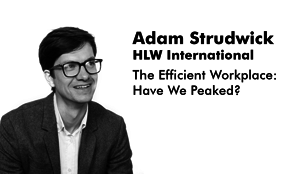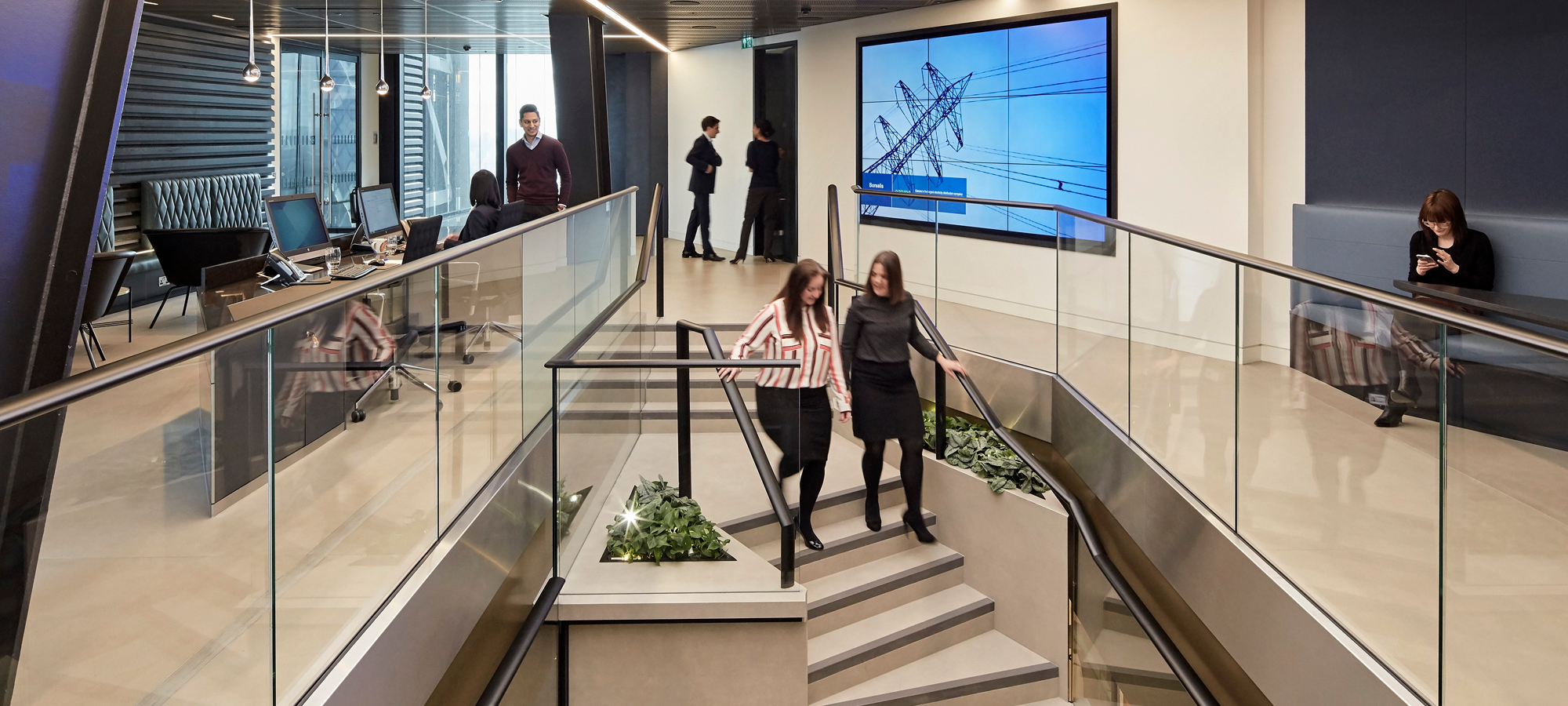 Go to https://stobuildinggroup.com/wp-content/uploads/2017/03/Adam-Strudwick_HLW_cover-img.png
Go to https://stobuildinggroup.com/wp-content/uploads/2017/03/Adam-Strudwick_HLW_cover-img.png
An Interview With… Adam Strudwick – The Efficient Workplace: Have We Peaked?
With the rise of the open-plan workplace, companies have seemingly embraced a new way of working and of using space. But has this trend gone too far? Where do we go from here? Adam Strudwick, associate principal and design director at HLW InternationalGo to https://hlw.com/ in London, shares where he sees office design headed and where the industry needs to turn its focus. (Hint: “productivity” is the operative word.)
It seems like we’re in an office fit-out golden era, where companies are investing significantly in urban campuses, repositioning buildings and upgrading to attract and support talent. Are we?
I believe we are currently in a perfect storm but facing a crosswind that could see the industry stagnate if we are not careful. We must not be complacent but continue to innovate, push boundaries and challenge the status quo – as that is what we as designers are here for.
In today’s fast-paced global economy it’s all too easy to create a homogenous, safe, design approach – projects that contain the same story and a similar design intent and aesthetic. Success breeds copycat design, which we’ve seen happening a lot in the last few years.
Some are saying the trend toward totally open, collaborative offices has gone too far. What do you think?
We’re definitely in a post-open-plan world and we won’t go back to siloes. The benefits of planning for collaboration and space saving are here to stay. Clients are much more considered and educated to the needs of their staff and are aware of some of the barriers and pitfalls of open plan and indeed the open to effect new ways of working. The one size fits all solution is irrelevant in today’s workplace.
Although there is no one formula to solve the productivity question, mainly because no one business is the same and every business reports success differently, we’re trying to help our clients support their business through high-level strategic thought.
Productivity in the workplace is the key issue for all our clients. A workplace can look great but it has to truly support the business’s aspirations and more importantly enable its employees to work effectively and productively. This rationale is now applied much more wholesale to projects than just individual spaces. We have to think about how teams within a business want to work and where those areas overlap and merge. We need to understand what makes and organisation productive. Sometimes it’s not so much about space but about their technology or how they deliver projects. It’s about IT, HR, working practices, people’s contracts. It’s much more than a design and construction solution.
How do you translate what makes a company productive into a design? Are there certain principles that remain consistent?
It’s all about understanding what a client’s requirements are and delivering to that. Certainly, the briefing or the strategy is 100% tailored to the challenges of that specific project. If through briefing and discovery we find that the best way for an organisation to work is for everyone to have an office, then that’s what we do. It’s our job to challenge their assumptions and help clients see what it would be like to work in a different way There is no one size fits all mentality at HLW, some businesses are more interested in benchmarking as part of the briefing process measuring themselves with their peers and more other progressive organizations Having that information for base design is really important, but it doesn’t lead necessarily design. It supports design decisions.
Structure Tone fitted out HLW’s London offices. How do you approach redesigning your own spaces?
We went through the same exercise we provide our clients. We practised what we preach — we listened to staff, hosted workshops and put our staff first. We had a very people-centric approach where we wanted to make sure health and wellbeing was integral to the space. So, we made sure water stations were nearby, everyone has a sit/stand desk and implemented a variety of facilities and areas for people to work away from their desks with lots of opportunity for movement. Another key factor for us was making our digital connection stronger to connect with clients around the world.
What have corporations gotten right in their workplace design?
One thing most companies recognise is that the workplace is a highly important part of business. It’s more than just real estate bottom line and hierarchies. The companies who are doing it well understand it’s not just about efficient but effective use of space. That might mean buying or leasing less space and working in a different way, but it has to be better way.
One of the most important things for organisations to understand is to treat space as a continuous journey, not a finished product. What often happens is a company makes changes in the first few weeks of moving into a new space but then leaves it as is for 10 or 15 years. This mindset needs to shift to the idea that design and the way it’s being used should continuously evolve. It’s our job, as designers, to provide a framework for businesses to do that. We need to think ahead to the entire tenure of the space, and beyond. If things need to be tweaked, that’s not a failure. That’s evolution, and design needs to support that.
What does the workplace of tomorrow look like?
One of the most important factors in how offices will look in the future is fluidity. The very nature of how and where we work is changing at a rate of knots, we’ve already seen what the rise of digital natives has done for co-working and serviced office provision. Flexible leasing structures will be par for the course in ‘tomorrows world’. Hence space will also need to evolve annually, monthly and perhaps even hourly.
What about the effect of technology?
Technology will certainly continue to play a huge role in the way people work, but not at the expense of humanity. Technology should and is a means to make the workplace come together and provide a sense of connectivity. Human interaction will always remain a priority, regardless of whether people work at desks, on tablets or in the café. People and businesses will always need a home base….the definition of whether the word ‘office’ remains is another story.
In your experience, what effect will BREXIT have on industry attitudes?
Who can predict what Brexit, once triggered, will effect? Whilst uncertainty prevails – and not just in Europe – all we can do is what we do best and that is be poised to support, shape and react to our clients’ needs as we do every day.
You can learn more about HLW’s work hereGo to https://hlw.com/.
